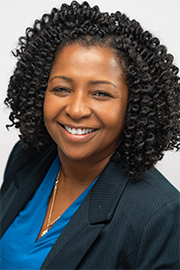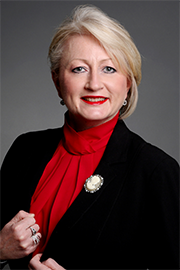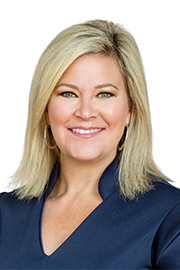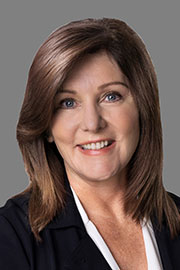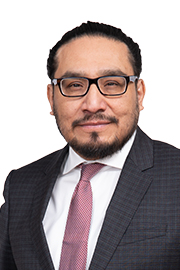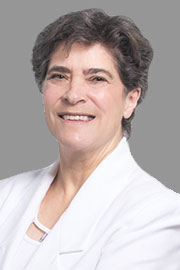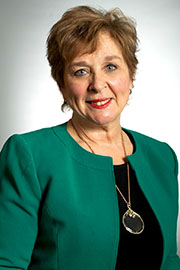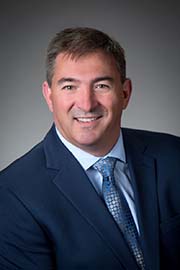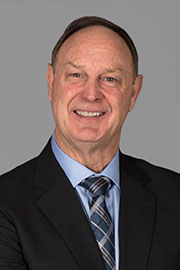- May/10/23 4:50:00 p.m.
Question?
- Hear!
- Rabble!
- May/10/23 4:50:00 p.m.
I’d like to thank the member for her presentation. Recently, on the day to acknowledge missing and murdered Indigenous women, girls and two-spirited individuals, I had the opportunity to attend my alma mater, Althouse College, who had taken and repurposed their library into an Indigenous learning space as well as an outdoor area.
Specifically, we are sitting on quite a vast footprint here at Queen’s Park. My question to the member: How would you like to see the outdoor space reimagined to include Indigenous peoples? How can you foresee us making sure that this is a welcome and open space, building on those relationships?
- Hear!
- Rabble!
- May/10/23 4:50:00 p.m.
Thank you to the member from Etobicoke–Lakeshore for her speech. I have to say, it has been a privilege sitting on the committee for procedures and House affairs with you, under the chairperson as well.
I appreciated all the speeches. One thing that I’ve heard, a common thread, and I’d like to see if you could elaborate on that, is when it comes to technology and our, how shall I say, technology challenges currently in this building—I think we’ve all experienced it; in certain places, you can’t get WiFi.
Talking about the future, and even when we were in Ottawa and seeing how they did up the current chamber with technology and what the future may hold—if the member could elaborate on her thoughts on our challenges currently and into the future related to technology.
- Hear!
- Rabble!
- May/10/23 4:50:00 p.m.
Thanks for the question. I think everything is on the table right now. We’re having those discussions. We’re just really in the early stage.
I think the most important thing is consultation. It’s not for a small group of us to make those decisions. This is Ontario’s place. This is for Ontario. This is for Ontarians. This is for future politicians and parliamentarians. Certainly I’d love to do a design, but it’s not just about me. It has certainly never been about me. It’s about our communities. It’s about all of us. It’s about our history. It’s about our future.
Any type of information that they would like to share, please share it with the committee, because I think we all have something to say on how we’re going to make this place even better than it is today.
I actually have to applaud the staff. The staff who work here have done a phenomenal job making this work. I’m sure they all walk around with a roll of duct tape—my goodness, some of the stuff that you’d think was duct-taped together. But they’ve done a phenomenal job to make sure that we can debate; to make sure that these lights allow the proper lighting to come down, so when the cameras are rolling, we’re seen; the work that they do to make sure that when we’re called upon, our speaker comes on; and the translation, so we can certainly have our debate in multiple languages for those francophones in our province.
Technology is certainly something that is important, and it’s also the future. I think I was on the top floor, the third floor, when we saw the one room where a lot of the tech—I guess the background, where they have all the knobs and tubes and all that type of business. There’s lots of work to be done at the technology stage. All you have to do is go into any of these offices, and you will see a lot of cable, and none of that cable is even used today.
- Hear!
- Rabble!
- May/10/23 5:00:00 p.m.
Thank you, Speaker, and thank you to the member for Etobicoke–Lakeshore for her remarks. I enjoyed listening to stories about your family and stories about when you worked here in the 1990s, and I’m just wondering if you might take a moment or two and tell us about some of the changes you’ve seen in the building since the 1990s and if they’ve been effective.
- Hear!
- Rabble!
- May/10/23 5:00:00 p.m.
That’s a great question, because I think one of the most important things is to not lose what is here, and one of the things we saw when we were on Parliament Hill was that every piece was actually numbered, brought somewhere and then stored somewhere so it could be put back when the time came. So, that’s all going to be part of the decanting, and that’s why it’s such a large project, because they do want to take it out, they number them and then they’ll put them back in place. So we can’t—you are right. For your granddaughter and everyone’s grandchildren, we can’t lose what we have. It has to be remembered and the engineers have a system in place to make sure that that does happen.
Well, as a staff member, you have a little bit more time on your hands, so you’re running around and seeing the stairwells. What changed is the roof; it’s changed, and I believe there was—this was red at one time, if I’m not mistaken. The carpet was red. So that changed, and some of the chairs are newer.
When it comes to the offices, I remember there were vaults in some of the offices in this place, which is pretty cool because we used to have a party in the vaults down the hallway there. There were actual vaults, and at one point I think that’s where the money was, although this place doesn’t have any money.
So, what has changed? Well, technology, of course, has changed. We were not allowed cellphones. No one could have a cellphone or a computer. As staff, my goodness, BlackBerrys didn’t even exist. I remember we had pagers, so they’d have to find us. If you wanted to reach your member, as staff you actually had to send notes in. You couldn’t text them automatically. Certainly technology has changed, and what’s allowed here as an MPP now versus then is twofold. That didn’t even exist at the time.
That’s just in a short period of time. Imagine what’s going to happen in 20 years. Technology’s going to change so much. We can’t answer all those questions because it’s yet to come. So we have to be prepared for the future.
Certainly we want to keep it within cost. We don’t want the cost to go skyrocketing, but there should never be a “let’s not look at something.” I think this is an opportunity to get it right. We’ll want to take our time and look at it, and we want advice from everybody. As we’ve said, it’s important to get it right because it’s not about us; it’s about the future. So let’s continue those conversations.
- Hear!
- Rabble!
- May/10/23 5:00:00 p.m.
Meegwetch, Speaker. I’m very honoured to be able to speak on Bill 75.
We know this place was not built for people who look like me. As a First Nations person, as the First Peoples of these traditional territories and our ancestral lands—I guess, first off, I’d like to welcome everyone to our territories, to these lands that we now call Ontario.
I’ve been here close to five years, and when I first came, I didn’t feel at home. I knew that this place was a colonial place.
Coming from a northern reserve, being born in an Indian hospital—actually, in Sioux Lookout, we had two hospitals. Sioux Lookout had about 4,000 or 5,000 people, and we had two hospitals. One was a federal hospital, and the other one was a provincial hospital. The provincial hospital was for white people. The federal hospital was an Indian hospital for people like me, so that’s where I was born. And then I had to go up to my reserve, which is a small—at that time, it was probably 200 or 300 people. I had to go to school. I started kindergarten there, and I finished grade 8 there. When I went to school, I started learning about the ABCs, the language, the colours—it was in kindergarten. They call them Indian day schools now—and it’s that approach to, where I should not learn about my ways of life, my language. And then, I had to leave for high school, because we don’t have that school.
I’m just sharing this, Speaker, because it will go into what I think should be part of the changes to this building.
Then, I went to grade 9, and I went to a Mennonite school—and through that whole time, there were things that were happening that I thought were acceptable, but later in life, I found out that it was actually an Indian residential school. I moved out of there, and I went to a public school in Sioux Lookout, Ontario, which is where I live right now, and the name of that school was Queen Elizabeth District High School.
So there’s all this colonialism you see, and it becomes a way of life.
The land that, again—and going back to here—makes up what we now call Ontario includes traditional territories and multiple treaty territories. I always talk about treaties in this place. Again, some are shared, but I think the ones that most people are familiar with now have towns and cities in them—including this place, where Queen’s Park is, where Toronto is.
Queen’s Park is on the traditional territory of the Mississaugas of the New Credit First Nation, but the people of this nation do not live here. Their First Nation is over 100 kilometres away from Queen’s Park. These are stolen lands. These lands have been taken from First Nations. When I’m here, I’m always reminded of, it has always been the aim of most legislation in Canada’s history and Ontario’s history, including—it was to displace First Nations people from their lands. That’s why I grew up on the reserve. Reserves were created to take away people from their traditional territories. Reserves were created to put us on a small piece of land where we are provided with access to housing, access to health care, and to take away the people from these lands and the resources that are in those traditional territories. That’s how it displaces people.
Right now, I think on-reserve you’ll see the high rates of language loss, dependency on government, dependency on other things such as welfare. We never created welfare. There was never welfare before we had reserves. We were surviving on our own until we were placed on-reserve.
One of the ideas I always talk about as well is about Indian residential schools. We know that Indian residential schools in Canada and Indian residential schools in Ontario are one of the country’s most shameful legacies. These places were church-run. I went to a Mennonite school, and they strapped people, those Mennonites. Even though they pray to their God, and they hold—you know, they do things and they still did the things that they did. We were forced to cut our hair. We weren’t allowed to speak our language. They were government-funded institutions that Indigenous children, against their will and subject to—again, I talked about some of the abuse, the neglect, the dangerous living conditions, again to further the goal of assimilation, which is Canadian culture, religion. That’s what colonizers considered civilized.
I’m not supposed to be here, but I am here. I talk about that, and I think those are some of the things that when we start developing the concept on how we’re going to make this place more real, where you share the truth-telling stories of the real history of Canada—again, these schools I talk about are just one of the many tools that were used to displace us from our lands by removing the language, by removing the children.
Even in this place, I cannot even speak my language. If I started speaking my language to you, you would stop me. I know it. It’s just that way. But I know it’s not individually to you. This place does not accept me as a First Nations-language person. I cannot even speak it. It’s not allowed. That’s how it works, where it makes sure that I have no connection to my lands, to who I am as a First Nations person from northwestern Ontario, from Kiiwetinoong, from my reserve. There’s no connection to my language. There’s no connection to my way of life. Language is a way of life.
Speaker, I don’t really have time to say more about the Indian residential schools, but, collectively, I think there are many people still working for justice for the survivors of residential schools, and not only that, but for their families, who are still recovering, generations later.
One of the methods of learning we needed to be done for justice for the survivors was the 2008 creation of the Truth and Reconciliation Commission, a government-sanctioned body that spent years hearing testimony from residential school survivors within First Nations, within Métis, within Inuit communities, compiling the accurate report on the atrocities committed and the intergenerational effects of Indian residential schools.
The systems of colonialism are not broken; they’re working exactly the way they’re designed to, which is to take away the rights of the people whose lands we live on today. I know recommending far-reaching policy changes and fostering comprehensive educational programs would prevent such atrocities from ever happening again.
Speaker, I would also like to say that when the Truth and Reconciliation Commission released its final report in 2015—only eight years ago—it recommended 94 calls to action for the Canadian government to right the wrongs that have been done to Indigenous people. It was only the first step to begin dismantling the systemic racism, to stop the oppression, to stop the colonialism that has devastated our people as First Nations.
This is very relevant to what we’re talking about today, because what we have in this building is history. It’s your history. I don’t see any history of First Nations people here. There might be a painting up there. We have a room of First Nations paintings in 228 and 230. I look around this place and I only see one aspect of Ontario’s history. That’s your history.
This building is a physical representation of heritage and commemoration, but shouldn’t all Ontarians be able to look around and see themselves here at Queen’s Park, in this place where we say, “everyone’s House”? First Nations people—we are people too. We are from Kiiwetinoong. We are the Oji-Crees, we are the Ojibways, we are the Crees. We are all over. We have been here since time immemorial. We’ve been here for thousands of years.
“What is it like for you to be in this building?” I ask myself that. People ask me that. Sometimes I say, “It’s so colonial here.” It is for me. But where do we see ourselves as First Nations people in this building, when we start the work of this restoration of this building? I think that with this act this government has an opportunity to implement call 79 and call 82 from the Truth and Reconciliation Commission. Call 79 says:
“We call upon the federal government, in collaboration with survivors, Aboriginal organizations, and the arts community, to develop a reconciliation framework for Canadian heritage and commemoration. This would include, but not be limited to:
“(i) Amending the Historic Sites and Monuments Act to include First Nations, Inuit and Métis representation on the Historic Sites and Monuments Board of Canada and its secretariat.
“(ii) Revising the policies, the criteria and practices of the National Program of Historical Commemoration to integrate Indigenous history, heritage values and memory practises into Canada’s national heritage history.
“(iii) Developing and implementing a national heritage plan and strategy for commemorating residential school sites, the history and the legacy of residential schools and the contributions of Aboriginal peoples to Canada’s history.”
That’s Call 79 from the Truth and Reconciliation Commission.
“Call 82,
“We call upon provincial and territorial governments, in collaboration with survivors and their organizations, and other parties to the Settlement Agreement to commission and install publicly accessible, highly visible residential school monuments in each capital city to honour survivors and all the children who were lost to their families and communities.”
That’s what we need to do. That is the real history of Ontario. That is the real history of Canada. There’s an opportunity there.
To all the pages who are here, they are the change-makers. The kids—I know they’re listening. I know they do not understand that history that we didn’t learn.
There is an opportunity here in this bill to build on these calls and make sure that there’s a recognition of not just Indigenous people but our history, our real history.
We need to make sure that this act integrates Indigenous history, heritage values, our languages and memory practices into Ontario’s heritage and history that we see in this building. This can only happen with First Nations’ full consultation. This can only happen with our input, with First Nations’ input. We have to be able to see ourselves in this building. We have to be able to see that we are part of this place.
One of the things that I see—a very minor change—is the carvings up above the main entrance to the chamber. We have the wolf that speaks about humility; we have the beaver that speaks about wisdom; we have the bear that speaks about bravery; we have the turtle that speaks about truth; we have the raven that speaks about honesty; we also have the buffalo that teaches respect; but most importantly, we have the eagle as well that teaches you love.
Sometimes when I listen to everybody here doing business, especially during question period, you are not following those teachings. There might come a day if you continue that way when First Nations will ask for that back because you’re not respecting it. Meegwetch.
- Hear!
- Rabble!
- May/10/23 5:00:00 p.m.
I wonder if we could just have a little imaginative exercise. So the Minister of Northern Development mentioned earlier the idea of possibly having a movable Legislature, which I think is a very interesting thought, especially if we don’t think about the cost or the mechanics, but the idea of it. I wonder if we could think also about language. English and French were made as the official languages of Canada as a colonial state. What if we were able to hear Cree, Oji-Cree, Ojibway, Mohawk? How would things have been different if those languages and thought processes had been part, and is there a way we can incorporate that into our future?
- Hear!
- Rabble!
- May/10/23 5:00:00 p.m.
Further question?
- Hear!
- Rabble!
- May/10/23 5:20:00 p.m.
Certainly. Meegwetch for that question. I think it’s always important to listen to people, listen to First Nations. Again, typically, we are not listened to in this place. In this provincial Legislature, Queen’s Park, government, sometimes things are done in a way that makes it look as if they’re doing something without really doing anything. They give us the minimal stuff. That’s not acceptable anymore. You cannot be 10% colonial. You might as well be 100% colonial. I think it’s important to have some type of Indigenous group that you will be able to engage with, and that you will listen to us.
- Hear!
- Rabble!
- May/10/23 5:20:00 p.m.
Thank you to the member opposite, the member from Kiiwetinoong, for his comments, which I enjoyed listening to. The member mentioned that we don’t see Indigenous peoples reflected here and that we have an opportunity with this legislation to be able to see Indigenous peoples reflected here. I would say that I think we’ve made a little progress on that. We have the Seven Grandfathers—is that what they’re called—and we also have the member from Kiiwetinoong himself here, so some Indigenous people will see some reflection of themselves. What else would you suggest we can do in a reimagined Queen’s Park or Legislative Building?
- Hear!
- Rabble!
- May/10/23 5:20:00 p.m.
A lot of people are going to have a lot of suggestions as to what they would like to see in a redesigned Queen’s Park and in a redesigned legislative precinct. Some people will want various different things, and then those suggestions will have to be vetted and some kind of decisions will have to be made. So I’d like to invite the member from Kiiwetinoong to give us his idea of what would be the mechanism or the way suggestions would be received and then discussed or vetted and then decisions would be made. If he can give us an idea of what he thinks about that.
- Hear!
- Rabble!
- May/10/23 5:20:00 p.m.
I appreciated being here and listening to your remarks. I have so many thoughts. I’m going to try and distill it down. One of the things that you had said was about making this place more real, telling the real history of Canada, and I think history is a big part of when we look around this place. It is a big part of the story, but I also think that the future and the next chapter is an important part, because it’s one thing to say that everyone is welcome here, but that feels very polite. That we open the doors and say, “You are allowed in,” that’s about permission and manners. It’s a very different thing to say that people belong here. How can we approach this process to ensure that more people belong in this space?
- Hear!
- Rabble!
- May/10/23 5:20:00 p.m.
Questions?
- Hear!
- Rabble!
- May/10/23 5:30:00 p.m.
Thank you for your presentation. I’m wondering, really, if we were observing the Seven Grandfather Teachings, what it would look like in the decision-making process. We had a decision made today about a mining bill, and it was objected to by the nine First Nations of Matawa, by the Chiefs of Ontario, 131 First Nations, by members of Treaty 9 and Whitesand—
- Hear!
- Rabble!
- May/10/23 5:30:00 p.m.
I think it’s important to acknowledge some of the things that we see—the paintings. I go to some offices and when I try to get Indigenous art or woodland art in my office, most of it is taken, and it’s taken by other MPPs, it’s taken by other offices. Reconciliation is not having woodland art in your community. That’s not reconciliation. We need to be better than that. But I think it’s important to, again, commission and install—publicly accessible, highly visible—a residential school monument on the grounds. Meegwetch.
I think we would be able to move forward in a good way together as a—not First Nations, not as parties, those party lines that sometimes we don’t agree upon. I think we would be able to move things further, to have better communities, to have a better province, but also a better Canada. Most importantly, I think if we work together—we always want the same thing, and that’s to have a better society. Meegwetch.
I think it’s important, again, to acknowledge some of the historical practices, the historical things that have been done to, again, First Nations. And if it was up to me, if I had the translator in the box that could speak my language, I would really like that.
- Hear!
- Rabble!
- May/10/23 5:30:00 p.m.
I look at the timer here; I’ve got 20 minutes, and I turn and I look at the clock, and it is 25 to 6. So I guess I’m the last batter of the day, because when we throw in the questions, it will take us past 6 o’clock.
I’ve listened to a lot of the speeches today on this. I’ve listened to a lot of the conversation on it. I’ve had lots of conversations with people about it. Typically, when I come in to do a speech, I have a number of things I want to talk about, and then, as I listen to other people talk, I change my mind on what I’m going to say. I don’t want to repeat things that others have talked about. So this is going to be a very meandering and wandering type of speech, and I’m actually curious to see where I’m going to go with it myself.
When we look back at the history here, though—and I’ve done a fair bit of research on the history of it. I find it interesting that in 1850—that’s when the first cornerstone was actually laid for the first building that was here—the original property was leased. This is one I think is really interesting, because when you look at what that lease was—
And then the building was built. The first Legislature that people sat in here was in 1893. When you look at the building itself, the grandeur of the building, when you look at the carvings that have been put in here, the structure of it, it truly is an amazing monument. But as we all know, when you have an older building and you need to make renovations to it, it’s something that’s going to be costly. You know that it’s something that’s going to take a significant amount of time, and unfortunately, there is nobody alive today that was alive when this building was being built. So when we open up the walls, there are going to be things that we’re going to find that we have no idea were there that we’re going to have to address.
I’ve owned a number of homes, and I’ve renovated pretty much every home I’ve had. I tend to buy a home that is very dilapidated, and I gut it, and we build it back the way I want—well, actually, honestly, we build it back the way my wife tells me she wants it, but I pretend that it’s the way I want it as well, because it makes her happy if she thinks that I like what she’s suggesting to it. The last three homes that I’ve done that with, we have found things in the walls that when the home was built someone purposely put in there as a time capsule. Sometimes I think it was by mistake, because we found a T4 slip in the wall of the house I’m currently in. It was from 1981. I don’t think they really meant to leave their T4, but it was interesting to see what they made in 1981 as a school principal. We found notes in the walls of some of the houses. We found dead mice, or the remains of dead mice. There are a lot of different things that you will find, and when we take these walls down, I fully expect that we’re going to find some time capsules that the craftspeople left behind because they could.
One of the things when I was first elected that I thought was really interesting—we all get a tour of Queen’s Park, and we hear some of the history on it. In certain areas, there are faces that are carved into the walls. When we look across, there are two of them of Queen Victoria. One of them is a very good representation of Queen Victoria; the other one, I’m told it was during a labour strike, and she kind of looks more like a jack-o’-lantern than she does the Queen. I’m wondering whether or not that was put up that way as a protest because of a labour strike.
The craftspeople weren’t able to put their names on anything. Someone who is a painter will put their name at the bottom of a painting, but those who did the woodcarvings couldn’t, and what we’ve been told is that most of the images that have been carved into the walls—the angels that are there—were either self-portraits or portraits of their family members. And that’s something that I think is very valuable to keep.
When we do the demo—it’s been talked about already; the member from Timiskaming–Cochrane talked about that, that it’s not like you can come in with a sledgehammer and just tear everything out and start afresh. There is some significant history that is in this building that is going to need to be saved. All of the woodcarvings are going to need to be saved. Another member talked about the ceiling and, in 1996, when they started to do that renovation and they took the white off, they found that there were actually still paintings on the ceiling. It would be a shame to lose that history. I don’t know how they’re going to take those down without doing some kind of damage to it, but I’m sure that we’ll bring in some craftspeople that will do their very best to preserve as much of that as possible.
The member from Etobicoke–Lakeshore talked about the amount of cables that are here and some of the challenges with WiFi throughout the building. But I want to point out, they had wireless technology when this building opened in 1893. Now, I’m sure all of you are looking at me like, “Are you off your rocker? They didn’t have wireless technology.” The lights in here were not electric. The four main lights were lowered and they would light the candles in the kerosene lamps that were in it and then they were raised back up. That’s wireless technology from 1893. That is something that I hope we don’t lose, the grandeur of these. When they made the renovations way back when, they were able to preserve the look and feel of it and put in electric lighting. And then the secondary lights that were added when television cameras were put in here, because it wasn’t bright enough for it, it was done in a way that makes it look like it was part of the original design of this building. My hope is that as we go through the renovations, we make sure that we preserve as much of that as possible because it truly is a grand building. It truly is a work of art.
Now, I recognize that there are a lot of things that we can do moving forward to make sure that we are accommodating what new technologies are. One of the things I did want to talk in particular about in the bill is the Legislative Protective Service. I want to put a slightly different perspective on it, and I’m going to touch on some personal things for me. The Legislative Protective Service, they are here in the precinct, but they don’t have peace officer abilities outside of the precinct. It’s been said a couple of times by other members that having the Legislative Protective Service able to do things at your constituency office or outside of the precinct, being recognized as peace officers that way, is something that would be very valuable, because all of us rely on our local police forces for it. And there are people, I’m sure, who are saying, “Why do you need to do that? Why do you have to have extra policing capabilities on it?” And this is where I’m going to get into a couple of minutes of my own personal experiences.
I was first elected in 2018. I came into being an elected official with certain expectations on it. I am a 53-year-old straight white male. There is no demographic in North America that is more privileged than the demographic that I come from. I have had death threats. I have had threats to be kidnapped and tortured. My staff have had death threats. My home has been graffitied. The wheel nuts on my truck were loosened and I had a wheel come off while driving. I know it was not because we did something wrong with the car, because the tires had been changed 12,000 kilometres earlier, five months earlier. If the tire was going to come off because we hadn’t put the lug nuts on tight enough, it would have come off in the first couple of hundred kilometres. We know who did it; we can’t prove it.
As I said, I’m a 53-year-old straight white male. There is not a more privileged demographic in our society than what I am. I’ve had voice mail messages. My wife works at the police department and she has had threatening voice mail messages left at the police department. They blocked their phone so that they couldn’t get through.
So why do we need to have the Legislative Protective Service have these extra powers outside of the precinct? Because if someone like me can have that happen to them, imagine what can happen to any other member who is not 6 foot 3 and 260 pounds and from that demographic. That’s why we need to be looking at some of those things.
There are some changes in here to FIPPA, to freedom of information. I’ve had people reach out to my office about that and ask why; what are we trying to hide? Well, there are certain security things that are going to have to be put in place in this building, that will have to be constructed into the building, and you don’t want someone to be able to do a quick Google search and find out what the security system is here at Queen’s Park, because we live in a different place today than we did just six years ago, when I first thought about entering politics. Not releasing the security information about this building makes perfect sense, and that’s why we’re doing some of those things, because we don’t want to find ourselves in a position where someone can circumvent it.
Now, I’m not suggesting that we’re going to have some person come in and try to attack us all, but we know that with cybersecurity, we are constantly under attack from hackers who want to try to break into the system, who want to try to take down the government computer systems. So having the ability to not release that makes perfect sense. It’s not necessarily for the security of us as members, but it’s for all of Ontario, to make sure that their government can still function appropriately. As I said, I had some constituents reach out to my office about that and question why we were doing something like that.
Going back to the physical aspects of the building, though, there are a number of things that we’ll have to look at, that we’ll have to have more consultation on. I’ve talked about the fact that the building opened in 1893. Really, when you look at how this building has served the people of Ontario, how this building has served those who have been elected, those who have been working here with the government, they did a fantastic job—they truly did—when they designed it, because it has served the people of this province for 130 years. There really aren’t a lot of things that you can say have only had minor tweaks to them over 130 years and are still functioning very, very well, but this grand building is one of those things that, for 130 years, has served the people very well.
But it’s time. It’s time to take it back to the studs, bring it down to bare bones, and then build it back up again, so that we can have it functioning for us for the next hundred-plus years. No one in 1893 ever anticipated that we were going to have computer equipment. They didn’t have electric lights in this room, so electricity wasn’t even something that they had considered. Fibre optics is how we send data now, but is fibre optics going to be the way that we do it a hundred years from now? I can’t tell you that.
I went to university. My first year was in 1989. My one computer prof talked about five-and-a-half-inch floppies and how we would never—five-and-a-quarter-inch floppies and three-and-a-half-inch floppies; sorry—leave the five-and-a-quarter, that people wouldn’t adopt the three-and-a-half because all of IBM’s technology was based on five-and-a-quarter. Well, that lasted for about a year, and then we were into the three-and-a-halfs, then we had Zip drives and we had a whole bunch of other technologies that replaced it. So to be arrogant enough to say that we’re not going to need a new technology 100 years from now is just ludicrous.
One of the challenges we’re going to have, then, when we rebuild this building is what types of things we’ll put in place to allow for that expansion, for that new technology, when that new technology comes. Yes, we can put conduit all throughout the building so you can run more cables, but perhaps we’re not talking about something being cabled 100 years from now; I don’t know. I’m going to leave it to the design engineers, those guys who are a lot smarter than I am on those types of things, to try to figure out what we’re going to need and give enough flexibility that we can do it.
When you look at the electricity in this building—I don’t know for sure, but I would bet a steak dinner, for anyone who wants to come over to my place for a barbecue, to say that we probably have a whole lot of knob and tube in this building. For those of you who don’t know what knob and tube is, think of an insulator on a wall and you run two tubes with electrical wire through them. There’s no electrical box that your light fits on. It’s just two tubes that come out of the ceiling, and you attach your light to that. I would bet there is a ton of knob and tube in this building.
We use copper piping for running water. This building has lead piping in it for running water.
- Hear!
- Rabble!
- May/10/23 5:30:00 p.m.
Another speaker had made the very good point that, thus far, this physical structure has lasted us over 100 years, and I think that’s a remarkably good record for any physical structure. And going forward, we should perhaps have a physical structure that will last us for the next 100 years without having to decamp, as I will say it. So I would like to ask the member to offer his ideas of how we can have a physical structure going forward that will last another 100 years.
- Hear!
- Rabble!
- May/10/23 5:30:00 p.m.
Further questions?
- Hear!
- Rabble!
- May/10/23 5:30:00 p.m.
That’s good ink on that paper.
- Hear!
- Rabble!


